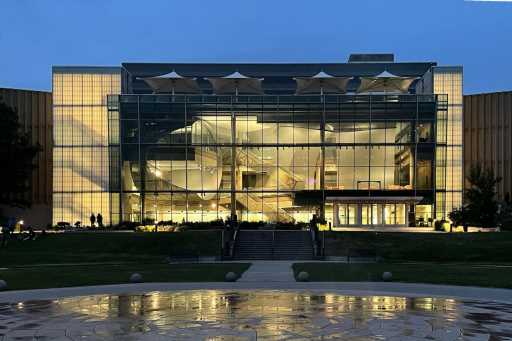Denver Museum of Nature and Science officials are preparing to close their North American Indian Cultures Hall this summer, deeming it “problematic” despite years of consultations with Native American representatives, updates, and changes meant to improve displays.
“We understand that the Hall reinforces harmful stereotypes and white, dominant culture,” museum vice president Liz Davis said in a letter sent to members on Wednesday.
“Despite collaboration with Indigenous representatives during its creation and ongoing efforts by curators, conservators, and others to update and improve various parts of the Hall, we acknowledge that it remains problematic,” she added. The Hall was first created in the 1970s.
For now, the museum has posted a “healing statement” at the front of the Hall — written “after taking into account the concerns expressed by the community,” Davis said in the letter.
“Within this space, the Museum perpetuates racist stereotypes by portraying Indigenous people in dioramas as if they exist only in the past, using inaccurate names for sovereign nations (regardless of government recognition), and displaying their belongings without ongoing consent or respectful attribution,” it reads in part. The statement adds that museum officials are committed to healing harm and repairing relationships, and that they will “reimagine” the space.
Although some of the issues are similar, the timing is not related to recent efforts at other Denver museums such as History Colorado Center or Denver Art Museum to address problematic exhibitions and disputed artifacts, said museum spokesperson Chris Patrello. Nor is it timed to the American Alliance of Museums Conference, which is taking place in Denver May 19-22.
“It’s the culmination of many months of work with community partners to determine the best way forward,” he said. “So it’s the product of that process.”
The hall is advertised as a way to “experience the incredible diversity among Native American groups and the practicality and artistry of their everyday objects,” according to the museum’s website. “As you travel through the various regions you can explore authentic reconstructed dwellings, including an Inuit snow house, a Northwest Coast clan house, a Navajo hogan, and a Cheyenne tipi. Along the way, examine beautifully crafted weavings, basketry, beadwork, and pottery. Stop to listen to stories and watch videos on the major cultural groups.”
Efforts are now underway to replace the exhibition with something more accurate and respectful to the cultures it depicts, and with their explicit involvement, Davis wrote.
“Together with Indigenous community members, we will reimagine exhibition curation, collecting, programming and conservation practices with respect to Indigenous culture, heritage and belongings. We recognize that there is more work to be done, and we are committed to working with, and for, community members as we move forward in reimagining our practices.”
But there’s no timeline for reopening the space, Patrello said.
The museum is inviting visitors to share their views using a scannable QR code located on the statement and on the museum’s online site, dmns.org.
Subscribe to our weekly newsletter, In The Know, to get entertainment news sent straight to your inbox.
Source: Read Full Article





